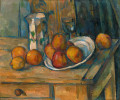Tour: Postimpressionism
| Overview | Start Tour | ||
 |
 |
 |
| 1 | 2 | 3 |
 |
 |
 |
| 4 | 5 | 6 |
| » | next | |||
| « | back to French Painting of the 19th century | |||
Overview
The label "postimpressionist" was unknown to most of the artists to whom we apply it today. When the term was coined by English critic Roger Fry in 1910, Van Gogh, Gauguin, Seurat, and Cézanne were all dead. It does not describe a single style or even one approach. The bold, intense colors of Gauguin and Van Gogh are highly expressive—even emotional—while Seurat's systematic color dots and Cézanne's concern with structure seem more cerebral. In a sense, postimpressionist describes only what these artists were not: no longer satisfied to transcribe primarily visual effects. Like many artists in the 1880s they looked for ways to express meaning beyond surface appearances, to paint with the emotions and the intellect as well as the eye. The term postimpressionist does, however, acknowledge that impressionism had shaped these artists.
Captions
